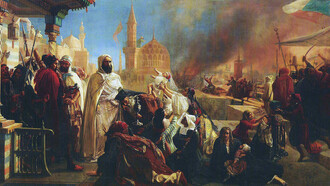Growing up in a society shaped by religious scriptures that dictate codes of conduct, individuals often find themselves at a crossroads. One path leads to embracing these teachings, finding peace in their acceptance. The other path, however, involves years of questioning and self-doubt, challenging these norms. The former path is easier, defended by faith, while the latter is a journey of unraveling and introspection. But how do these paths influence our lives and perspectives today?
Let's begin by examining two of the most significant epics in Hindu mythology. The Ramayana, which is believed to have been written around 200 B.C.E. by the sage Valmiki, centers on Ram, its heroic figure. The second is the Mahabharata, which is one of the longest epic poems in the world, attributed to the sage Vyasa. It encompasses over 100,000 verses divided into 18 books (Parvas) and covers a wide array of narratives, including the great Kurukshetra War between the Pandavas and the Kauravas.
If you were born into a Hindu family, you would observe how deeply culture is intertwined with faith. Having a profound belief in your religion is not inherently negative. However, the issue arises when patriarchy is imposed on women under the guise of religion. What is even more unjust is that men are not subjected to the same conditioning. This brings us back to the women in the Epics.
The epic Ramayana glorifies Ram for his valor and bravery. In summary, Sita marries Ram, and soon after, Ram is exiled for fourteen years. Ram, Sita, and his younger brother Laxman leave the palace to live in a forest. The climax occurs in the fourteenth year when Sita is abducted by the mighty villain and King of Lanka, Raavan.
Here, Sita is portrayed as a damsel in distress, with Ram as her savior. This narrative raises important questions about gender roles. Does Sita really need saving? Was she merely a dutiful wife? Who was Sita? Sita, the daughter of the Earth Goddess, adopted by King Janak, was no ordinary girl. As the daughter of Earth, she embodied immense power. The symbolism of fertility and vegetation suggests her life-giving abilities. Without Sita, Ram might never have been idealized as "Maryada Purushottam" (the ideal man). Imagine if Sita had fought Raavan and freed herself. Women would understand that they do not need a man to protect or complete them, recognizing their power and self-reliance. This would challenge traditional gender roles, as Sita's meekness and fragility were essential to Ram's bildungsroman.
In Hindu tradition, the name "Sita" is celebrated because she was not promiscuous. The name carries predetermined expectations. Yet her character is multi-faceted and deserves more recognition. She was not just Ram's devoted wife; she was powerful and self-sufficient.
The Mahabharata, another ancient Indian epic, details the rivalry between the Pandavas and the Kauravas over the throne of Hastinapura. Draupadi or Panchali is a central figure in this epic. Known for her pride and outspoken nature, she is often misunderstood. When she mocked Duryodhana, saying, "Blind man's son is blind," she was seen as deserving of her fate. However, Draupadi is a woman of strength, confidence, and resilience. She rebukes her husbands and questions the morality of those present at her disrobing, challenging toxic masculinity and fragile male egos.
In a culture of polygamy, Draupadi managed five husbands, a testament to her strength and complexity. Unlike Sita, Draupadi made her presence known, becoming a powerful figure in the Mahabharata. She embodies an early form of feminism, needing no protection, with her words as her weapon. While Ram fought a war for his wife, the Pandavas fought a war with their wife. Draupadi's political involvement was groundbreaking, marking her as an empress rather than just a queen. The Ramayana and Mahabharata occur in different epochs, the Treta Yuga and the Dvapara Yuga, respectively. This chronological difference explains the varying complexity of the two epics. The Ramayana presents clear principles for life, with a straightforward path to redemption. In contrast, the Mahabharata delves into the complexities of life and relationships, offering open-ended narratives.
While I initially set out to write about Sita and Draupadi, there are other silent women in these epics worth discussing. Despite Sita and Draupadi being binary opposites, feminist readings of both characters are inescapable.
Sita's story is one of sacrifice and devotion, often used to enforce patriarchal norms. Draupadi, on the other hand, is a symbol of strength and resilience, challenging toxic masculinity and traditional gender roles. These narratives challenge us to rethink traditional gender roles and celebrate the multifaceted characters that shape our cultural heritage.
It is crucial to remember that the perspective from which a story is narrated greatly influences its content. Most scriptures are written from a male viewpoint, often depicting women with limited autonomy. When women do exhibit autonomy, they are frequently portrayed negatively, as seen with Draupadi, who is depicted as dangerously rebellious for rejecting the notion of being a submissive woman. Unlike animals, humans have the ability and responsibility to question and think critically. While we can follow orders, we must also be willing to question them. Religion, tradition, and culture are deeply ingrained in us and, even unintentionally, shape our understanding of gender norms.
Now, for instance, in the Bible (New Testament) - Timothy 2:11-12: "A woman should learn in quietness and full submission. I do not permit a woman to teach or to assume authority over a man; she must be quiet."
Similarly in the Old Testament, Genesis 3:16: "To the woman he said, 'I will make your pains in childbearing very severe; with painful labor you will give birth to children. Your desire will be for your husband, and he will rule over you.'"
In Islam, Quran Surah An-Nisa (4:34): "Men are the protectors and maintainers of women, because Allah has given the one more (strength) than the other, and because they support them from their means. Therefore, the righteous women are devoutly obedient, and guard in (the husband's) absence what Allah would have them guard."
In summary, religious texts from both the Bible and the Quran have passages that reflect historical and cultural attitudes towards women that many interpret as promoting male authority and female submission. For instance, in the New Testament (1 Timothy 2:11–12), women are instructed to learn quietly and not to assume authority over men, implying a subordinate role. Similarly, in the Old Testament (Genesis 3:16), the consequence of Eve's actions includes a declaration that her husband will rule over her, reinforcing a patriarchal order.
In Islam, Surah An-Nisa (4:34) of the Quran describes men as protectors and maintainers of women, attributing this to men's strength and their financial support and encouraging women to be obedient. These texts collectively highlight a traditional view where women's roles are often defined in relation to men, suggesting they are not seen as equals or as individuals capable of independent identities and strengths.
Such interpretations have historically influenced societal norms, contributing to a gender dynamic where half of the population is often denied the confidence to fully express themselves. Meanwhile, the other half, across various cultures, shares vulnerabilities and fears stemming from these ingrained inequalities. These religious teachings have been used to justify gender disparities, perpetuating a cycle of discrimination and limiting opportunities for women to realize their full potential.
Of course, selectively picking passages and sayings from religious scriptures isn't the most balanced approach, as all religions offer valuable lessons and principles. However, we must critically evaluate and not adopt everything without question. This introspection often leads to an internal conflict, which only those who dare to question truly understand. Recognizing that the roots of patriarchy trace back to ancient times, long before our current languages and words existed, it's clear that dismantling these deep-seated norms will require years of questioning and unlearning. Religion plays a significant role in shaping any culture, bringing with it various rituals and traditions. Therefore, it is essential to continually re-evaluate the role of religious scriptures in dictating gender norms.














